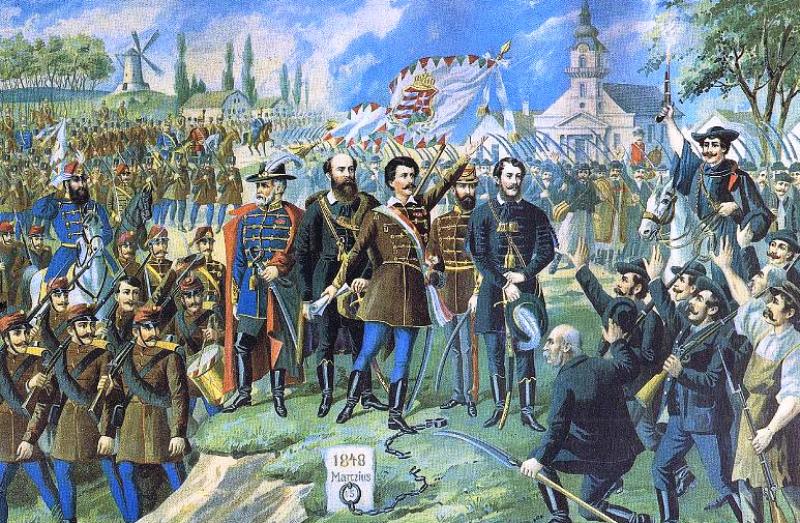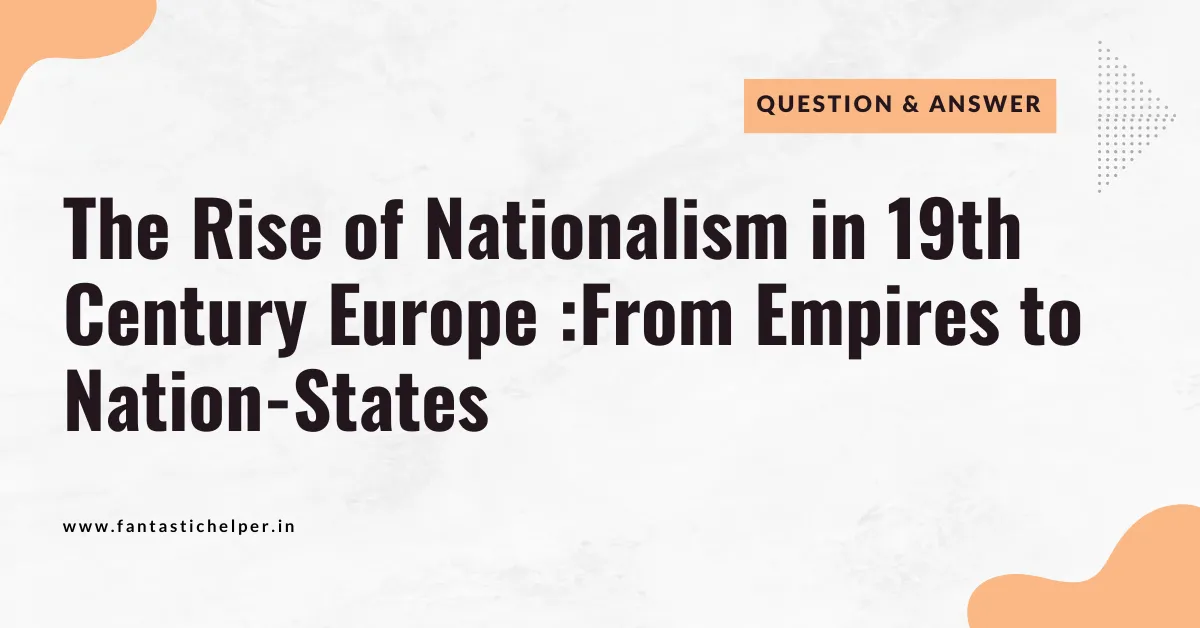| Question | The Rise of Nationalism in 19th Century Europe:From Empires to Nation-States |
| Subject | History |

The Rise of Nationalism in 19th Century Europe
The rise of nationalism in Europe during the 19th century was a transformative force that shattered the continent’s old order and paved the way for the modern nation-state system. Here’s a closer look at the key factors that fueled this movement:
1. Erosion of the Old Order:
- Dissolution of Empires: Europe’s dominant multi-ethnic empires, like Austria-Hungary and the Ottoman Empire, faced increasing discontent from subject nationalities. These groups, unified by common language, culture, and history, yearned for self-determination and the right to govern themselves. Nationalism provided a powerful ideology that challenged imperial rule and rallied people behind the idea of a nation-state that reflected their unique identity.
2. Inspiring Ideals and Events:
- French Revolution (1789): The revolution’s ideals of liberty, equality, and fraternity resonated far beyond France. It challenged the legitimacy of hereditary rule and absolutist monarchies, planting the seeds of popular sovereignty and national self-determination. The concept of a nation-state built on the will of the people, rather than dynastic claims, became an attractive alternative for many Europeans.
- Napoleonic Wars (1803-1815): While Napoleon’s conquests ultimately failed, they inadvertently sparked nationalist sentiment across Europe. His efforts to dismantle the Holy Roman Empire and create a French-dominated Europe aroused national consciousness in various regions. As Napoleon reshaped the political map, it awakened a desire among Europeans to define their own national destinies.
3. Cultural and Technological Catalysts:
- Romanticism: This artistic and intellectual movement celebrated cultural heritage, language, and folklore. It glorified national myths, heroes, and traditions, fostering a strong sense of national pride and unity. Romanticism provided a powerful emotional current that fueled nationalist movements by emphasizing the unique cultural identity of each nation.
- Print Culture: The rise of newspapers and widespread literacy created a platform for the dissemination of nationalist ideas. National narratives were shared, grievances were aired, and calls to action were spread across geographically dispersed populations. Print culture fostered a sense of shared identity and purpose among people who may never have met, binding them together as a nation.
- Revolutions of 1848: A wave of uprisings across Europe challenged the status quo and reflected the growing influence of nationalism. From France to Germany and Italy, revolutionaries fought to overthrow old regimes and establish nation-states based on principles of popular sovereignty and national identity. These revolutions, though not always successful in the immediate term, highlighted the growing power of nationalist sentiment and its potential to reshape the political landscape.
4. The Legacy of Nationalism:
The rise of nationalism fundamentally reshaped Europe. The continent transitioned from a system of multi-ethnic empires to a collection of nation-states. This process, however, was not always peaceful. Competition between nations, irredentist claims (claims to territories seen as rightfully belonging to a nation), and ethnic rivalries all contributed to the tensions that culminated in the outbreak of World War I.
Nationalism remains a potent force in global politics today, with its positive aspects – fostering national unity and civic participation – often intertwined with its darker potential for ethnic conflict and national exceptionalism. Understanding the rise of nationalism in Europe provides valuable historical context for the complexities of nationalism in the contemporary world.
The Rise of Nationalism in 19th Century Europe
FAQs: The Rise of Nationalism in 19th Century Europe:From Empires to Nation-States
1. What is nationalism?
Nationalism is an ideology that emphasizes the importance of national identity, often based on shared language, culture, history, and descent. It promotes the idea that a nation should be self-governing and have its own state.
2. When did nationalism rise in Europe?
Nationalism emerged in Europe throughout the 18th and 19th centuries, gaining significant momentum after the French Revolution (1789).
3. What factors contributed to the rise of nationalism?
Dissolution of Empires: Multi-ethnic empires like Austria-Hungary struggled with rising desires for self-determination among their nationalities.
French Revolution: The ideals of liberty, equality, and fraternity inspired calls for popular sovereignty and national self-determination.
Napoleonic Wars: Napoleon’s conquests and reshaping of the European map inadvertently awakened national consciousness in various regions.
Romanticism: This cultural movement celebrated national culture, language, and traditions, fostering national pride and unity.
Print Culture: Newspapers and increased literacy spread nationalist ideas and narratives, creating a sense of shared identity.
4. What were the consequences of rising nationalism?
Emergence of Nation-States: Europe transitioned from empires to nation-states, fundamentally redrawing the political map.
Revolutions of 1848: A wave of uprisings across Europe reflected the growing influence of nationalism.
World War I: Competition between nations, irredentist claims, and ethnic rivalries fueled tensions that culminated in the war.
5. How does nationalism influence Europe today?
Nationalism remains a powerful force, with both positive (national unity, civic participation) and negative (ethnic conflict, national exceptionalism) aspects that continue to shape European politics.
